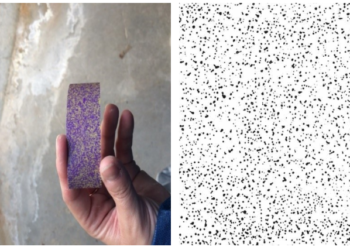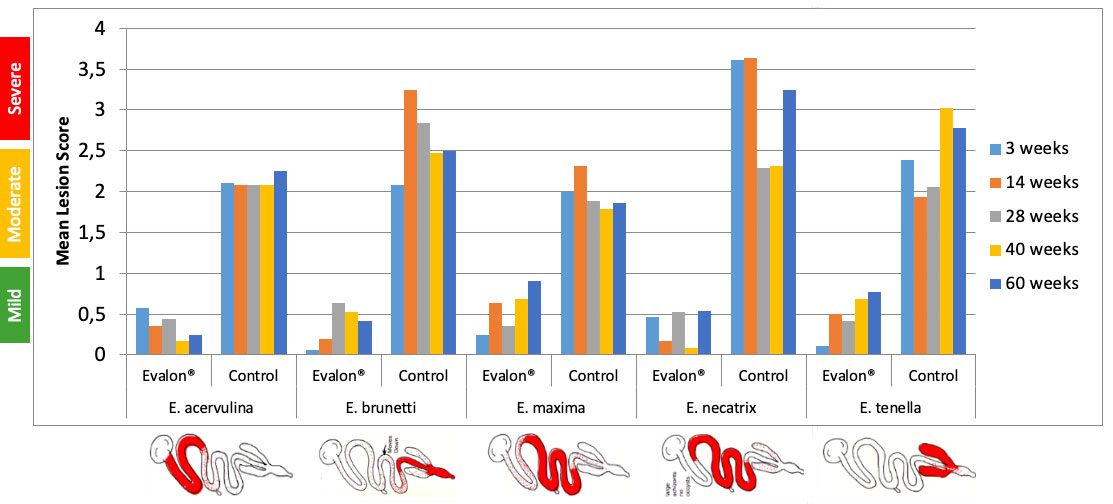 Figure 1: Coccidiosis is a challenge in alternative laying systems.
Figure 1: Coccidiosis is a challenge in alternative laying systems.
Key points: Coccidiosis Prevention by Vaccination
Owing to their mechanism of action and the pathogen that they are protecting against, these vaccines have some special characteristics and require special management, in particular:1. Immunity is species-specific and there is no cross-protection. Therefore, vaccines have to be selected that contain the relevant Eimeria species for long life-cycle and floor conditions, such as E. necatrix and E. brunetti. E. maxima is also of particular relevance as controlling it reduces the risk of necrotic enteritis for which it is the principal predisposing factor (Williams, 2005).
2. Recycling of the vaccinal oocysts is necessary for the establishment of appropriate and lasting immunity (with 3 replication cycles in the birds’ gut). This process depends on:
 Figure 2: Uniform distribution and droplet size for correct vaccination against coccidia.
Figure 2: Uniform distribution and droplet size for correct vaccination against coccidia.
a) Optimal administration of the vaccine (dose, droplet size and uniformity): the first replication strictly depends on this administration technique
b) Endogenous conditions associated with the bird (quality of the birds, immunocompetence and initial development of the chicks): these will affect both the first and subsequent replications.
c) Exogenous conditions (management of litter/paper, conditions of humidity, temperature, feed and density of the birds): the second and third replications will depend on whether good environmental conditions are achieved for the sporulation of the oocysts excreted on the farm (Kheysin, 1972).
 Figure 3: Reference droplet size for different vaccines applied in poultry by spraying.
Figure 3: Reference droplet size for different vaccines applied in poultry by spraying.
3. The cellular immune response is the one which is really effective against Eimeria spp. (Kim, 2019 ), so that it is important to boost this immunity in order to achieve good coccidiosis prevention. In this connection, there are several vaccines on the market, such as EVALON® (HIPRA), that are accompanied by a solvent (HIPRAMUNE® T), the composition of which stimulates the expression of cytokines such as IL-2 and INF-ϒ, which are known to trigger this chain of cellular immune response. As a consequence of this modulation, the immunity that is obtained will be more potent, effective and, what is very important in laying hens, longer lasting.
 Figure 4: Lesion scoring following an Eimeria spp. challenge at different ages, and the protective effect of vaccination with EVALON®
Figure 4: Lesion scoring following an Eimeria spp. challenge at different ages, and the protective effect of vaccination with EVALON®
Administration of coccidiosis vaccine
With regard to the administration of the vaccine, there are many variables that can influence the correct ingestion of vaccinal oocysts by the chicks. The closer the administration conditions are to ideal, the greater the chances of an early start to the first replication in the gut. Some of the factors which should be highlighted are:Preparation of the vaccine solution:
- It is important to follow the company recommendations and the product information leaflet.
- 100% of the dose indicated for each chick should be prepared and administered. Reducing the quantity of vaccinal oocysts ingested by the birds will make it more difficult for them to develop protective immune response and a good coccidiosis protection.
- Attenuated coccidiosis vaccines are formed by a suspension of the oocysts, which have a high specific weight. This means that they settle quickly, so that it is important to shake the vial of vaccine before use and to stir the vaccine solution during administration.
Method of administration:
- The most suitable method of administration of coccidiosis vaccines is by coarse droplet spray over the chicks. The chicks ingest the vaccinal oocysts contained in these droplets. The best conditions for this application are in the hatchery, as it is more practical to standardise the process and achieve homogenous results. It will be necessary to audit and calibrate the vaccination equipment periodically.
- The chicks can also be vaccinated by coarse spray when the boxes of chicks are received on the farm when they are a few days old. In this case, having the appropriate equipment and trained staff, as well as adjusting the vaccination times, will improve the chances of success.
- Vaccination by coarse spray with the birds inside the cages is not recommended, as this causes losses of vaccine doses, both because of the difficulty of operating in this type of installation and the increased movement of the birds. If the circumstances do require it, it is essential to have the appropriate vaccination devices and experienced staff.
- It is never advisable to administer the vaccine in the drinking water by means of a nipple drinker line, as this causes sedimentation of the oocysts all along the pipes, and they can even be trapped in biofilms. Blockages can also be caused in the system because of the size of the oocysts.
Equipment for application:
- If the vaccine is administered by fixed vaccination equipment (vaccination guns with compressor or spray cabins), dependence on the pneumatic system can cause oscillations in the pressure during the vaccination that generate a variation in the volume or in the size of the droplet.
- Vaccination using the HIPRASPRAY® device makes it possible to ensure that all the factors that can influence correct administration are properly observed. Thus, by means of its system of electric pistons, the above-mentioned pressure oscillations are eliminated and vaccine administration is achieved at a constant pressure.
- When portable equipment is used for vaccination (backpack sprayers), it is advisable to ensure a constant operating pressure, achieving a curtain of spray that covers each box of chicks completely. It is also essential to choose the appropriate nozzle to ensure that the final droplet size is greater than 200 microns.
- Kheysin, Y.M. (1972). Life cycles of Coccidia of Domestic Animals, London: William Heinerman Medical books LTD.
- Kim W.H., Chuadhari A.A., Lilehoj, H.S. 2019. Involvment of T Cell Immunity in Avian Coccidiosis. Front Immunol. 2019; 10:2732.
- Williams R.B., 2005. Intercurrent coccidiosis and necrotic enteritis of chickens: rational, integrated disease management by maintenance of gut integrity. Avian Pathology 34 (3), 159-180.



